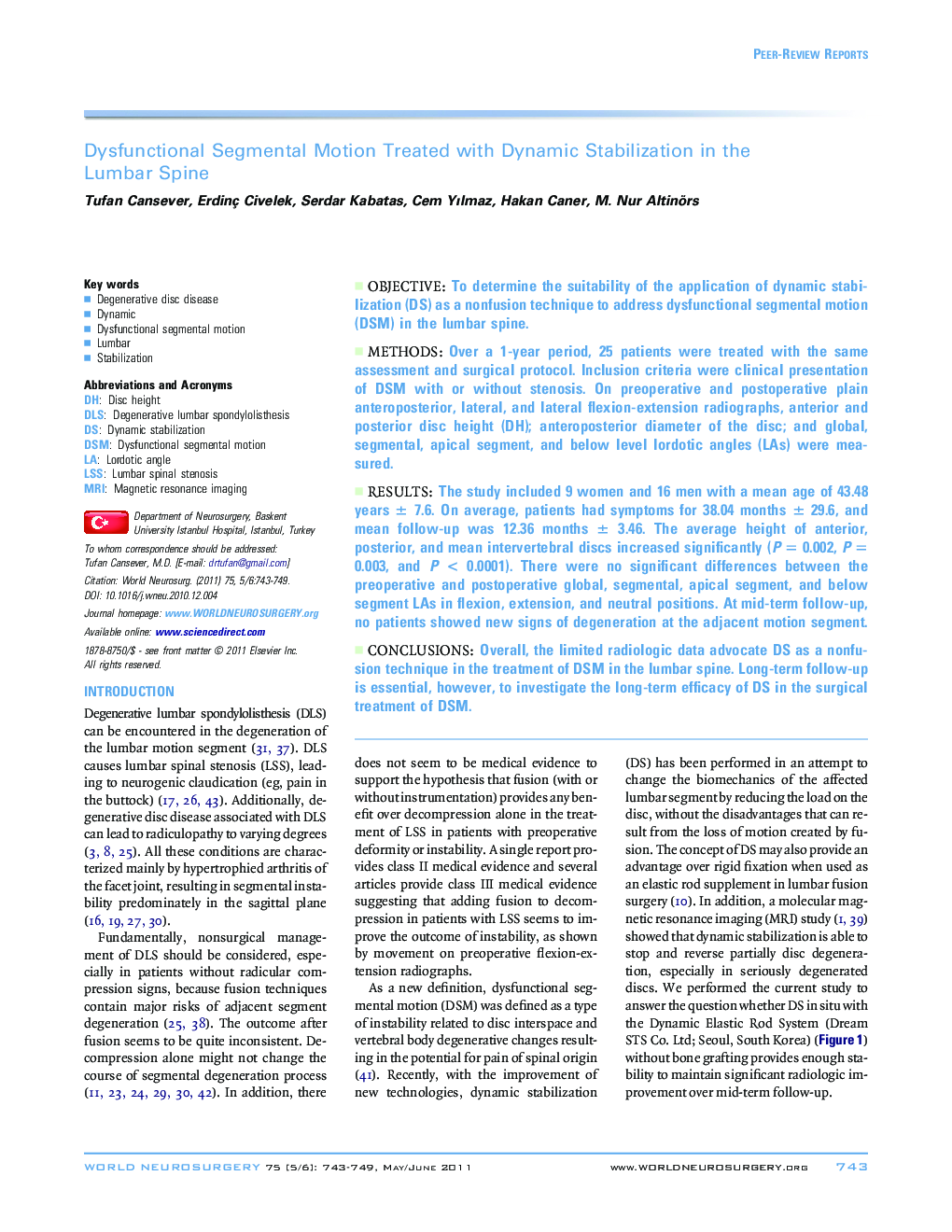| Article ID | Journal | Published Year | Pages | File Type |
|---|---|---|---|---|
| 3097291 | World Neurosurgery | 2011 | 7 Pages |
ObjectiveTo determine the suitability of the application of dynamic stabilization (DS) as a nonfusion technique to address dysfunctional segmental motion (DSM) in the lumbar spine.MethodsOver a 1-year period, 25 patients were treated with the same assessment and surgical protocol. Inclusion criteria were clinical presentation of DSM with or without stenosis. On preoperative and postoperative plain anteroposterior, lateral, and lateral flexion-extension radiographs, anterior and posterior disc height (DH); anteroposterior diameter of the disc; and global, segmental, apical segment, and below level lordotic angles (LAs) were measured.ResultsThe study included 9 women and 16 men with a mean age of 43.48 years ± 7.6. On average, patients had symptoms for 38.04 months ± 29.6, and mean follow-up was 12.36 months ± 3.46. The average height of anterior, posterior, and mean intervertebral discs increased significantly (P = 0.002, P = 0.003, and P < 0.0001). There were no significant differences between the preoperative and postoperative global, segmental, apical segment, and below segment LAs in flexion, extension, and neutral positions. At mid-term follow-up, no patients showed new signs of degeneration at the adjacent motion segment.ConclusionsOverall, the limited radiologic data advocate DS as a nonfusion technique in the treatment of DSM in the lumbar spine. Long-term follow-up is essential, however, to investigate the long-term efficacy of DS in the surgical treatment of DSM.
